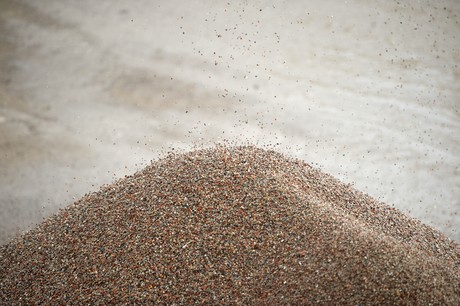Heavy metal or hard rock — both sound good to us!

What do you think of heavy metal and hard rock? We’re not talking music, but rather the two most problematic components of soil contamination. Whatever your musical tastes, in this case it’s unlikely you’re a fan. But as Diarmaid Connaire, Business Development Manager from waste management specialist CDEnviro, explains, his company doesn’t have a problem with either.
Cleaning up, investing in and re-using contaminated brownfield sites — of which there are an estimated 80,000 to 100,000 in Australia — protects human health and the environment. It also improves the appearance of the area and reduces pressure to develop unspoiled green spaces.
With benefits such as the reduction in fuel consumption resulting from travelling within an urban area to a brownfield site rather than to a greenfield site further afield, and economic benefits including rising property prices nearby, you have a compelling argument for redevelopment.
However, from the first industrial revolution in Europe until as recently as the 1980s, chemicals used in industrial processes have led to widespread soil pollution. This is the result of spillages, mismanaged industrial sites and unforeseen consequences of using materials previously thought to be harmless. Often chemicals were simply poured down drains or onto land, where they leeched into the soil and groundwater, resulting in long-term damage and leaving a toxic legacy.
Land is now considered contaminated when substances it contains could cause ‘significant harm to people or protected species’ or ‘significant pollution of surface waters or groundwater’. This contamination is a particular problem when trying to bring brownfield sites back into use. Decontamination is therefore an important economic factor as well as an environmental one.
Emerging solutions for effective land remediation
The contamination includes heavy metals, such as cadmium, lead, chromium, copper and zinc — either on the soil or at elevated levels within it — which can result in problems with processing and therefore high disposal costs of waste materials.
In addition to this man-made issue — heavy metals are naturally present in soil, but rarely in more than trace amounts — remediating land is also complicated by hard rock which can be large, abrasive and difficult to process.
Neither of these issues are new, and there are solutions available, but it is unusual for heavy metals and hard rock to exist in isolation. Options for dealing with them at the same time are extremely limited. Yet it is costly and time-consuming to deal with them separately.
‘Big bruiser’ equipment — such as a heavy-duty excavator, mounted breakers or a traditional crushing and screening plant — are able to deal with hard rock, but they are not equipped to deal with the chemical side of the problem. Likewise, where scientists have come up with a solution for the heavy metals, the machines all too often fall down as they aren’t robust enough for oversized rock.
However, there is now an effective middle ground. Companies like mine are able to bring science and engineering together. This means there is a solution to brownfield remediation which finally bridges the gap between the scientific and the practical. Put another way, we like the sound of heavy metal and hard rock!
A site-by-site approach to assessing risk is always required and must take into account the individual environmental characteristics of soils and human activities that have taken place there or nearby.
Flexible approach
When looking to remediate land, look for a system able to cope with the contaminants in the available space. Innovative new crushing and screening technology is now available with a range of modular options, meaning they can move from site to site or be fixed turnkey installations for long-term projects. This gives the flexibility required whatever the location and contaminant.
When dealing with heavy metals, material scrubbing and recovery processes should be used. Additional water treatment also allows the re-use of water that becomes heavily contaminated in the recovery process.
Some more traditional soil remediation processes use chemicals like surfactants. However, systems like ours provide efficient mechanical washing and scrubbing processes which reduce or even eliminate this requirement. This in turn generates a large saving on operating costs. The systems can also deal with organic matter and enable clean aggregate to be re-used within construction, and so offer an all-encompassing land remediation solution.
Hard rock and heavy metal no longer need to be treated as separate issues, meaning brownfield remediation just got more cost effective. Surely that’s music to everyone’s ears!
How Australia can increase its circularity rate
An expert said the solution could lie in developing onshore processing plants and creating...
Scouts SA secures future of its recycling centres
Scouts SA has partnered with Container Deposit Scheme specialist Return-It to grow its Scout...
Mining waste provides strong boost to concrete construction
Flinders University researchers are turning mining waste into a tool for sustainable...







